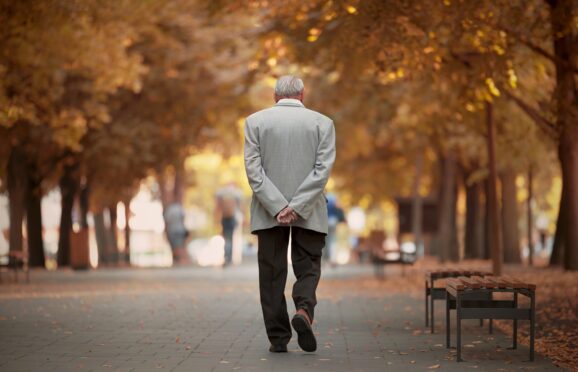
The stages of descent into social isolation that can be experienced by older people with hearing loss are laid out for the first time in a new study, spearheaded by research from Scotland.
Analysis by Dr Aysha Motala, a lecturer in psychology at Stirling University, could lead to more targeted interventions aimed at mitigating the impact this can have on health and social lives.
More than 65% of adults aged 60 or over experience some form of hearing loss such as difficulties understanding speech when background sound is present, according to the World Health Organisation.
Understanding the relationship between hearing loss and social isolation is vital because it is associated with cognitive decline and other health issues such as poor nutrition, smoking, alcohol abuse, depression, and heart disease, Motala explained.
“While the association between hearing loss and social isolation is acknowledged, the precise mechanisms and stages involved are not well-defined,” she said. “This work bridges that gap by proposing a comprehensive framework that delineates the progression from hearing difficulties to social withdrawal and eventual isolation.”
During the first stage – disengagement – older people with hearing loss tend to zone out, become bored and suffer attention lapses.
The next stage – social withdrawal – sees them leave gatherings early and even avoid certain situations.
In the final stage – social isolation – older people with hearing loss will limit connections leading to a lack of companionship and support.
Hidden public health crisis
Health experts warn loneliness is a hidden public health crisis.
The Sunday Post has partnered with Age Scotland for our Big Braw Community campaign – encouraging people to reach out to a neighbour or relative on their own, to spend time on a simple chat which can be a lifeline to the 200,000 older Scots who can go a whole week or more without speaking to anyone.
Supporters have called on the government to keep their promise to invest at least £10 million on eradicating loneliness.
Motala and co-researchers from Canada, Dr Bjorn Herrmann and Professor Ingrid Johnsrude, suggest a combination of interventions that may slow or halt the descent towards social isolation in older people suffering from hearing loss.
As well as clinical interventions, such as hearing aids, they propose holistic interventions that tackle issues, including psychological, social, and health issues, and provide a forum for socialising, education, and exercise to foster greater social engagement and participation.
Motala said: “Identifying these distinct stages offers valuable insights for developing targeted interventions. It may be useful for family doctors and audiologists who want to mitigate the risk of social isolation for their patients with hearing loss.”
Age Scotland chief executive Katherine Crawford said hearing loss can be a significant trigger to becoming increasingly isolated.
“This can be a particular barrier in older age, especially for those who may already find it difficult to leave their homes as they are not able to rely on phone calls or video calls to stay connected,” she said.
“The more we understand about how hearing loss impacts wellbeing, the better equipped we can be in ensuring those affected have the support they need.” Richard McKearney, audiology adviser at RNID – the Royal National Institute For Deaf People, a national charity that supports 12 million people in the UK who are deaf, have hearing loss or tinnitus – also welcomed the study.
“Around one in five adults in Scotland have hearing loss and hearing aids are an effective way of managing hearing loss,” he said. “They help people hear better at home and at work, are associated with lower odds of depression, and may reduce the risk of dementia.
“We know there are millions in the UK who have hearing loss but haven’t done anything about it, which means they’re at increased risk of social isolation, depression, and cognitive decline.”
Has Oor Wullie turned over a new leaf for our Big Braw Community campaign?
Hearing loss isolation
The three stages of isolation, as revealed by research, that can happen to older people who suffer from hearing loss:
Disengagement
During the first stage – disengagement – older people with hearing difficulties tend to zone out, become bored and suffer attention lapses.
Social withdrawal
The next stage – social withdrawal – sees them leave gatherings early and even avoid certain situations.
Isolation
In the final stage – social isolation – older people with hearing loss will limit connections leading to a lack of companionship and support.

Enjoy the convenience of having The Sunday Post delivered as a digital ePaper straight to your smartphone, tablet or computer.
Subscribe for only £5.49 a month and enjoy all the benefits of the printed paper as a digital replica.
Subscribe © Supplied
© Supplied